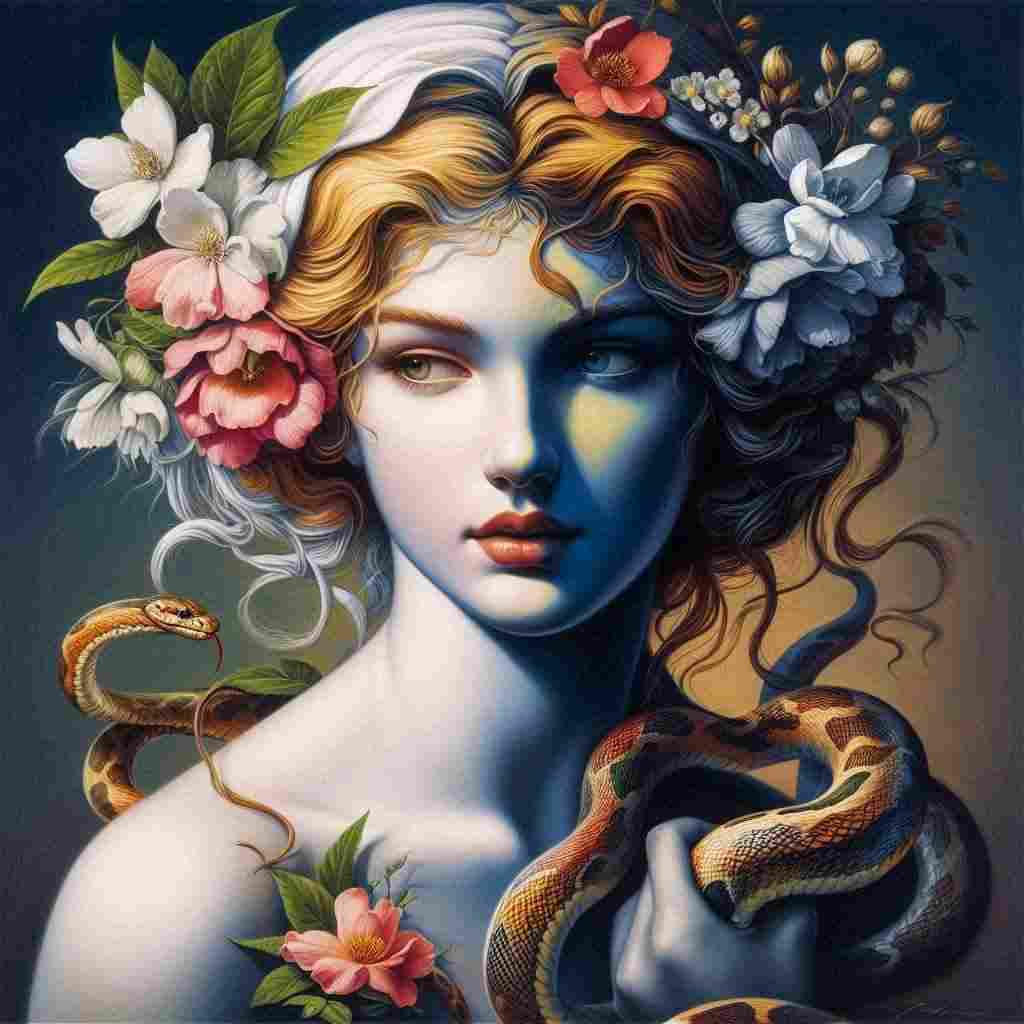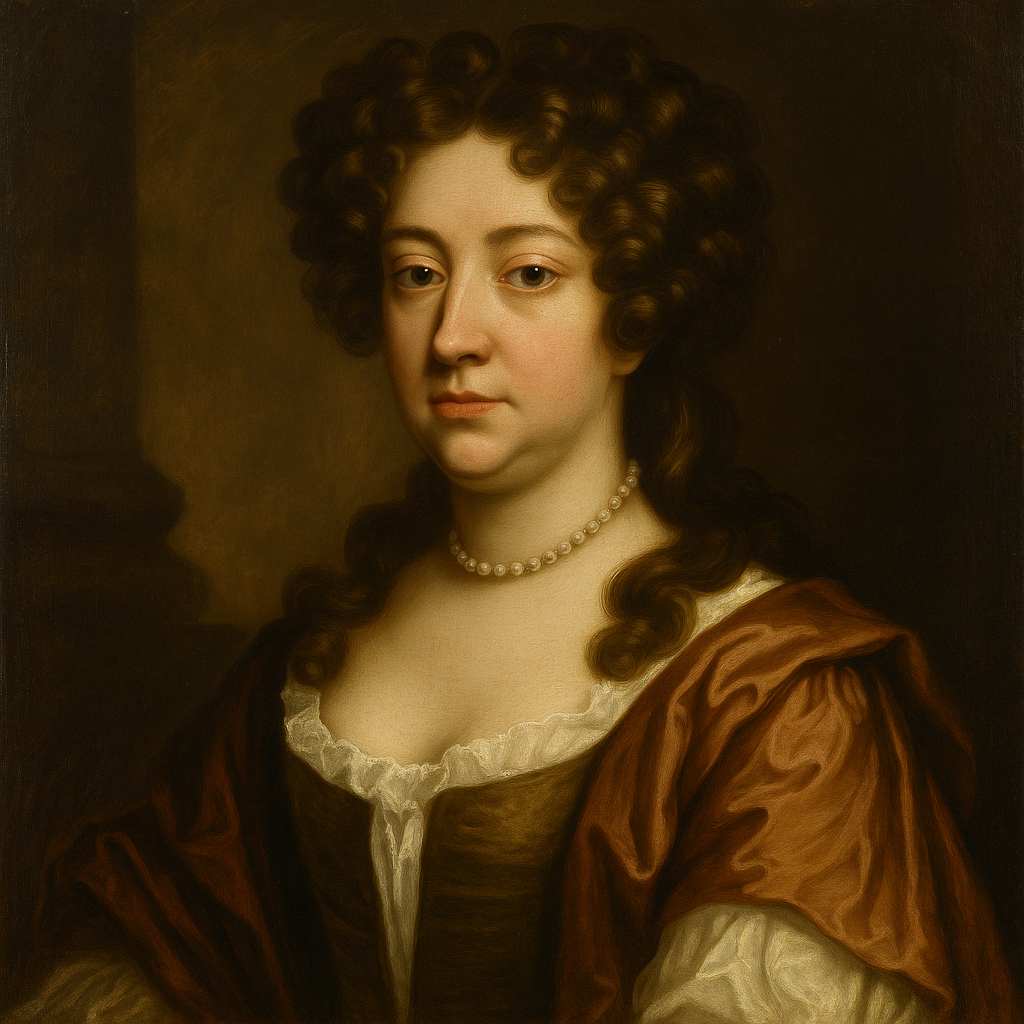To the Fair Clorinda
Aphra Behn
1640 to 1689

Want to track your favorites? Reopen or create a unique username. No personal details are required!
WHO MADE LOVE TO ME,
IMAGIN’D MORE THAN WOMAN
Fair lovely Maid, or if that Title be
Too weak, too Feminine for Nobler thee,
Permit a Name that more Approaches Truth:
And let me call thee, Lovely Charming Youth.
This last will justifie my soft complainte,
While that may serve to lessen my constraint;
And without Blushes I the Youth persue,
When so much beauteous Woman is in view
Against thy Charms we struggle but in vain
With thy deluding Form thou giv’st us pain,
While the bright Nymph betrays us to the Swain.
In pity to our Sex sure thou wer’t sent,
That we might Love, and yet be Innocent:
For sure no Crime with thee we can commit;
Or if we shou’d – thy Form excuses it.
For who, that gathers fairest Flowers believes
A Snake lies hid beneath the Fragrant Leaves.
Thou beauteous Wonder of a different kind,
Soft Cloris with the dear Alexis join’d;
When e’er the Manly part of thee, wou’d plead
Thou tempts us with the Image of the Maid,
While we the noblest Passions do extend
The Love to Hermes, Aphrodite the Friend.
Aphra Behn's To the Fair Clorinda
Aphra Behn's poem "To the Fair Clorinda" presents a rich tapestry of themes related to gender, beauty, and desire, exploring the complex interplay between physical allure and moral innocence. In this poem, Behn engages with the traditional notions of femininity and masculinity, juxtaposing them to reflect on the nature of attraction and virtue. This analysis will delve into the poem's thematic concerns, structural elements, and use of literary devices to unravel the nuanced interplay of gender roles and the paradoxical nature of beauty.
Thematic Exploration
At the heart of "To the Fair Clorinda" lies a deep exploration of the conflict between physical beauty and moral integrity. The speaker addresses Clorinda, who is described as a figure whose beauty transcends conventional feminine allure. Behn contrasts the physical attributes of Clorinda with her perceived innocence, suggesting that her external charm hides a complexity that challenges traditional gender norms.
The speaker's initial address to Clorinda reveals an awareness of the limitations of conventional feminine labels: “Fair lovely Maid, or if that Title be / Too weak, too Feminine for Nobler thee.” This line indicates a recognition that Clorinda’s allure surpasses standard categorizations of beauty and femininity. The shift from “Maid” to “Lovely Charming Youth” reflects an attempt to reconcile Clorinda's appearance with her character, suggesting that her beauty encompasses qualities typically associated with both genders.
The poem further explores the tension between attraction and moral rectitude. The speaker articulates a sense of disillusionment and struggle against Clorinda’s “deluding Form,” noting that her beauty induces pain and confusion: “Against thy Charms we struggle but in vain.” This imagery underscores the notion that Clorinda’s physical appeal presents a moral challenge, leading to an internal conflict where physical attraction and ethical considerations are at odds.
Structural and Stylistic Analysis
Behn employs a structured form with a clear rhyme scheme (ABABCC) and a rhythmic pattern that underscores the poem's thematic concerns. The regular rhyme scheme provides a formal constraint that contrasts with the speaker’s internal chaos, mirroring the tension between outward appearances and inner feelings. The poem’s structure reinforces the idea that the speaker’s struggle with Clorinda’s beauty is both methodical and deeply personal.
The metrical pattern predominantly consists of iambic pentameter, a traditional and stable rhythm that reflects the formal nature of the address. However, the variation in rhythm and the occasional use of trochaic feet create moments of emphasis and highlight the speaker’s emotional fluctuation. These metrical variations mirror the conflict between the speaker's rational attempts to understand Clorinda’s allure and the overpowering nature of her beauty.
Imagery and Symbolism
Behn’s use of imagery and symbolism is crucial in conveying the poem’s themes. The “fair Flowers” and “Fragrant Leaves” metaphorically represent Clorinda’s beauty, which is compared to a blooming flower that conceals a potential threat: “A Snake lies hid beneath the Fragrant Leaves.” This imagery evokes the idea that beneath Clorinda’s appealing exterior lies a complexity that might be perceived as threatening or deceptive. The snake, a symbol of danger and temptation, contrasts sharply with the innocence implied by the flower, highlighting the duality of Clorinda’s character.
The depiction of Clorinda as both “beauteous Wonder of a different kind” and “Soft Cloris with the dear Alexis join’d” introduces a duality in her character. The reference to “Soft Cloris” suggests a delicate, traditionally feminine aspect, while the mention of “Alexis” implies a more assertive, masculine quality. This juxtaposition reflects the speaker’s struggle to reconcile these two facets of Clorinda’s persona, further complicating the notion of innocence and virtue.
Interpersonal Dynamics and Psychological Depth
The psychological depth of the poem is evident in the speaker’s conflicted emotions towards Clorinda. The speaker expresses admiration and desire while simultaneously grappling with a sense of moral unease. The conflict between physical attraction and ethical considerations is central to the speaker’s emotional experience, revealing a complex interplay of desire and moral judgement.
The speaker’s description of Clorinda as a figure who “tempts us with the Image of the Maid” while embodying a “Manly part” underscores the fluidity of gender and the challenge it poses to traditional notions of attraction. This duality complicates the speaker’s feelings, suggesting that Clorinda’s beauty and charm evoke both admiration and anxiety. The speaker’s acknowledgment of the conflict between “the noblest Passions” and “Love to Hermes, Aphrodite the Friend” indicates a broader contemplation of the nature of love and virtue, extending beyond the immediate context of the poem.
Historical and Literary Context
Behn’s poem can be situated within the broader context of 17th-century literature, a period marked by evolving attitudes towards gender and sexuality. Behn’s work often challenges traditional gender norms and explores the complexities of female desire and autonomy. "To the Fair Clorinda" reflects Behn’s engagement with these themes by presenting a character who defies conventional categories and provokes a reconsideration of gender roles and moral values.
The poem’s exploration of beauty and innocence also engages with classical literary traditions, such as the use of mythological references and the portrayal of characters who embody both idealised and problematic qualities. Behn’s treatment of Clorinda aligns with the tradition of depicting complex, multi-dimensional female characters who defy simplistic moral categorisations.
Conclusion
Aphra Behn’s "To the Fair Clorinda" offers a sophisticated exploration of the tension between physical beauty and moral integrity. Through its structured form, rich imagery, and psychological depth, the poem delves into the complexities of desire and virtue. Behn’s portrayal of Clorinda as a figure who embodies both traditional femininity and masculine assertiveness challenges conventional notions of gender and morality. The poem’s engagement with these themes reflects Behn’s broader literary concerns and her innovative approach to exploring the nuances of human attraction and ethical dilemmas. By examining the poem’s thematic concerns and literary techniques, we gain insight into Behn’s contribution to the discourse on gender, beauty, and desire in 17th-century literature.
This text was generated by AI and is for reference only. Learn more
Want to join the discussion? Reopen or create a unique username to comment. No personal details required!



Comments
No comments yet. Be the first to comment!